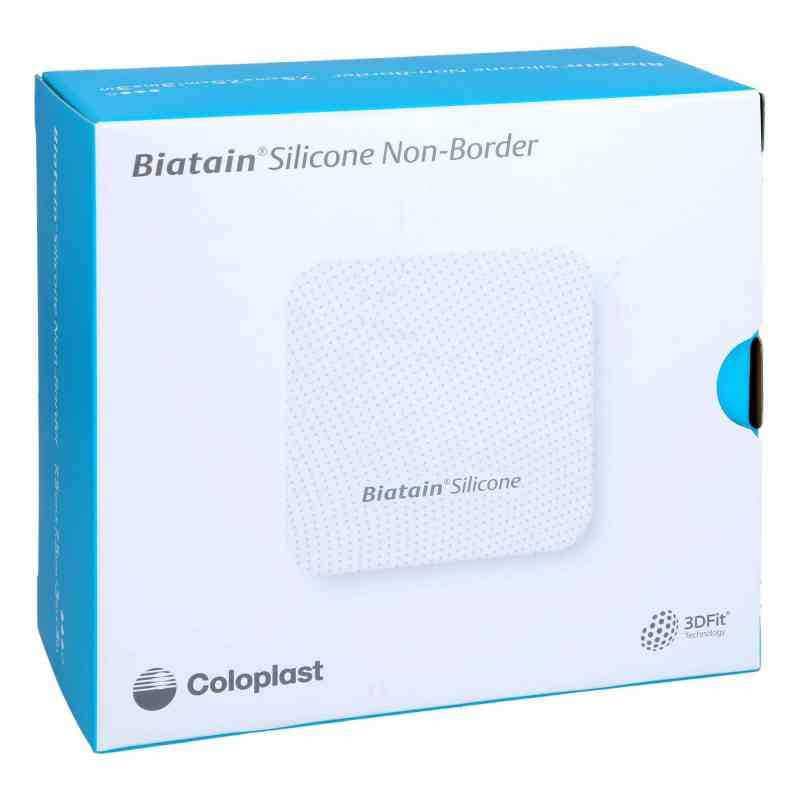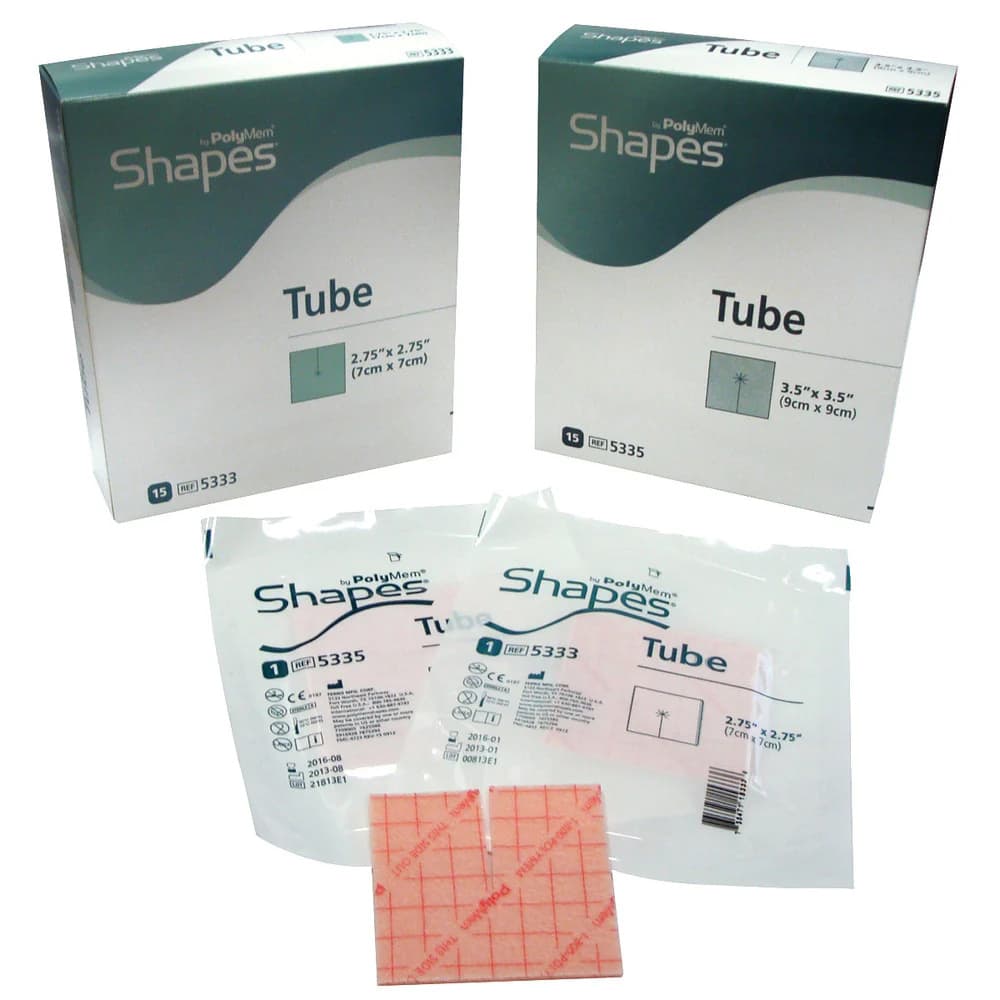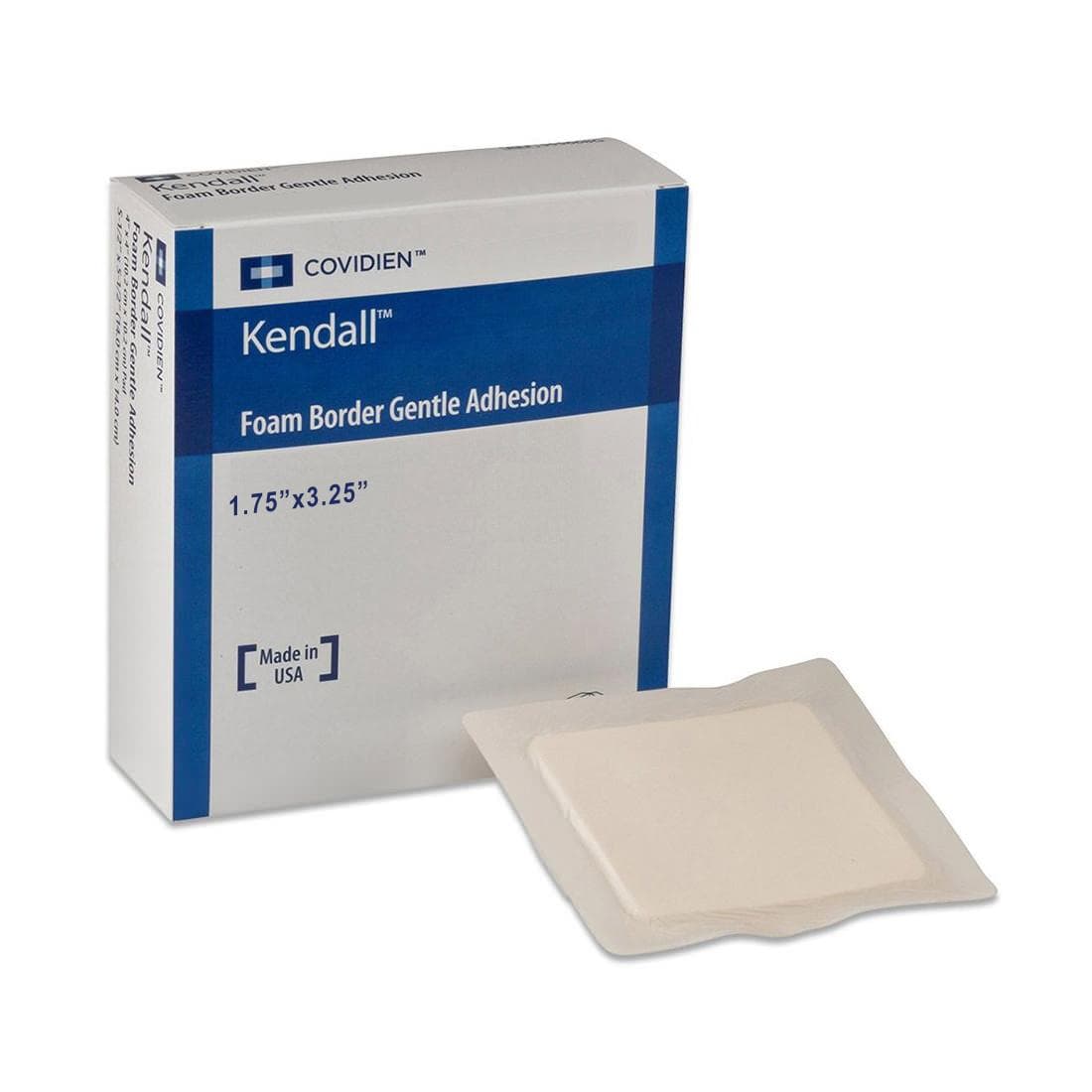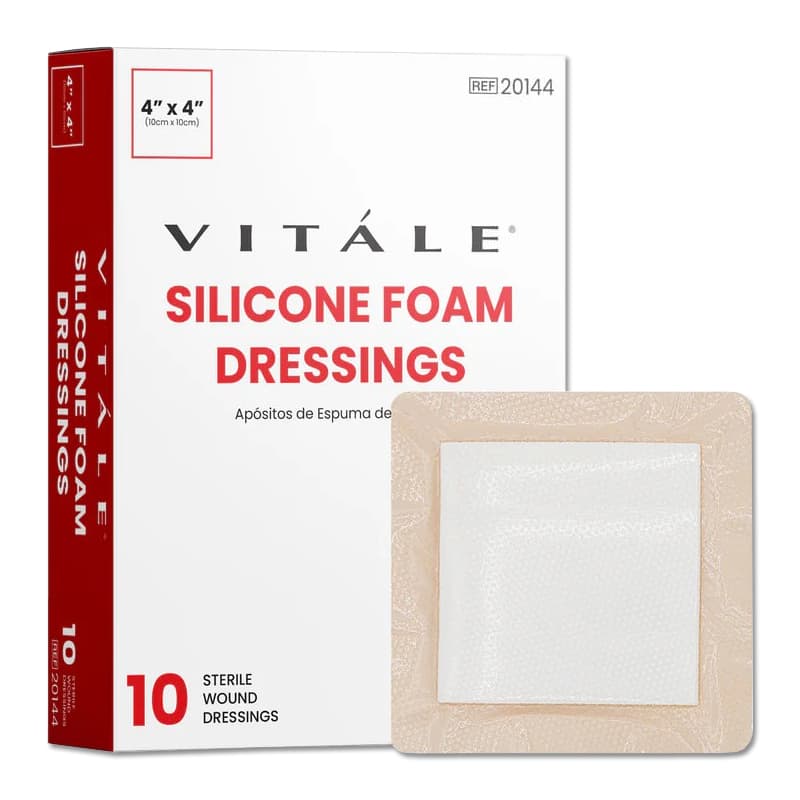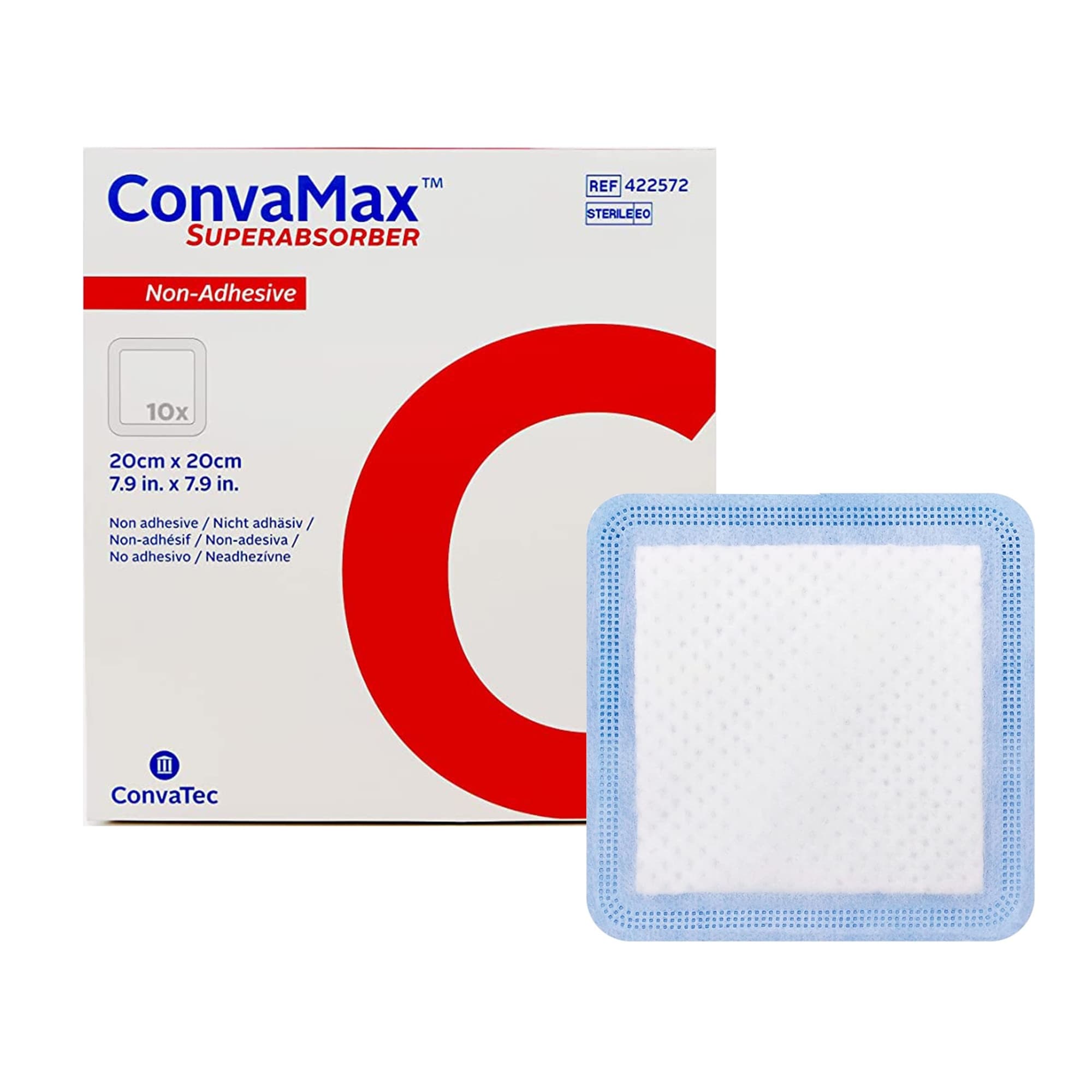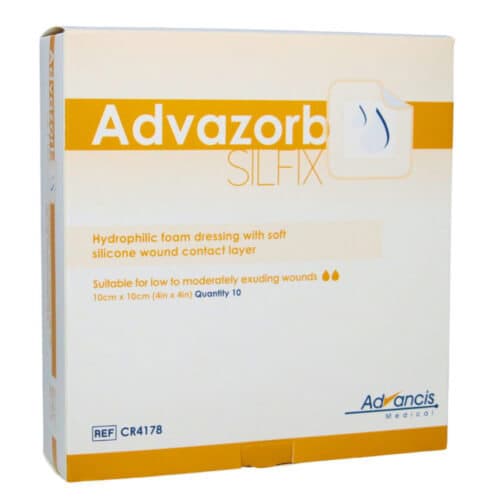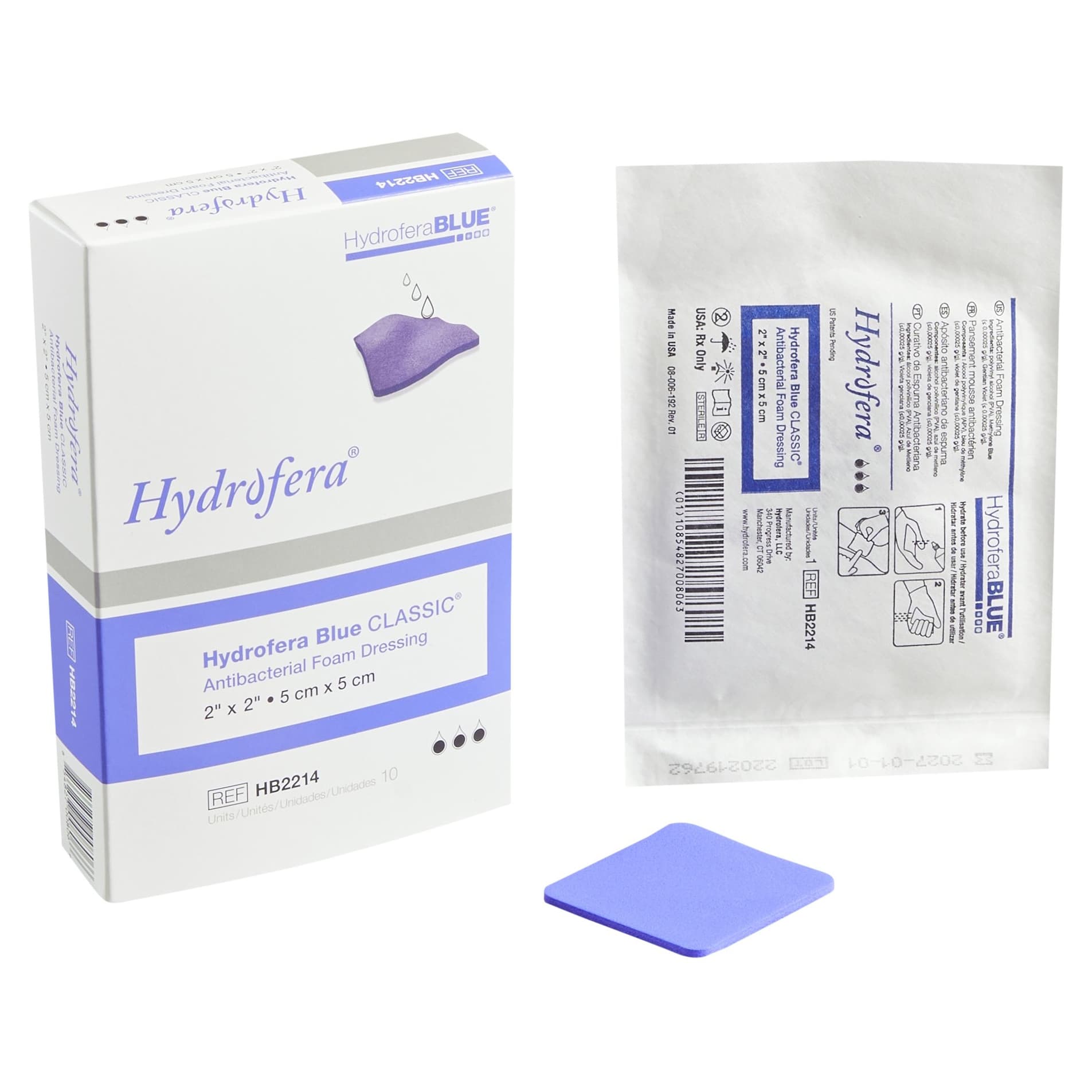

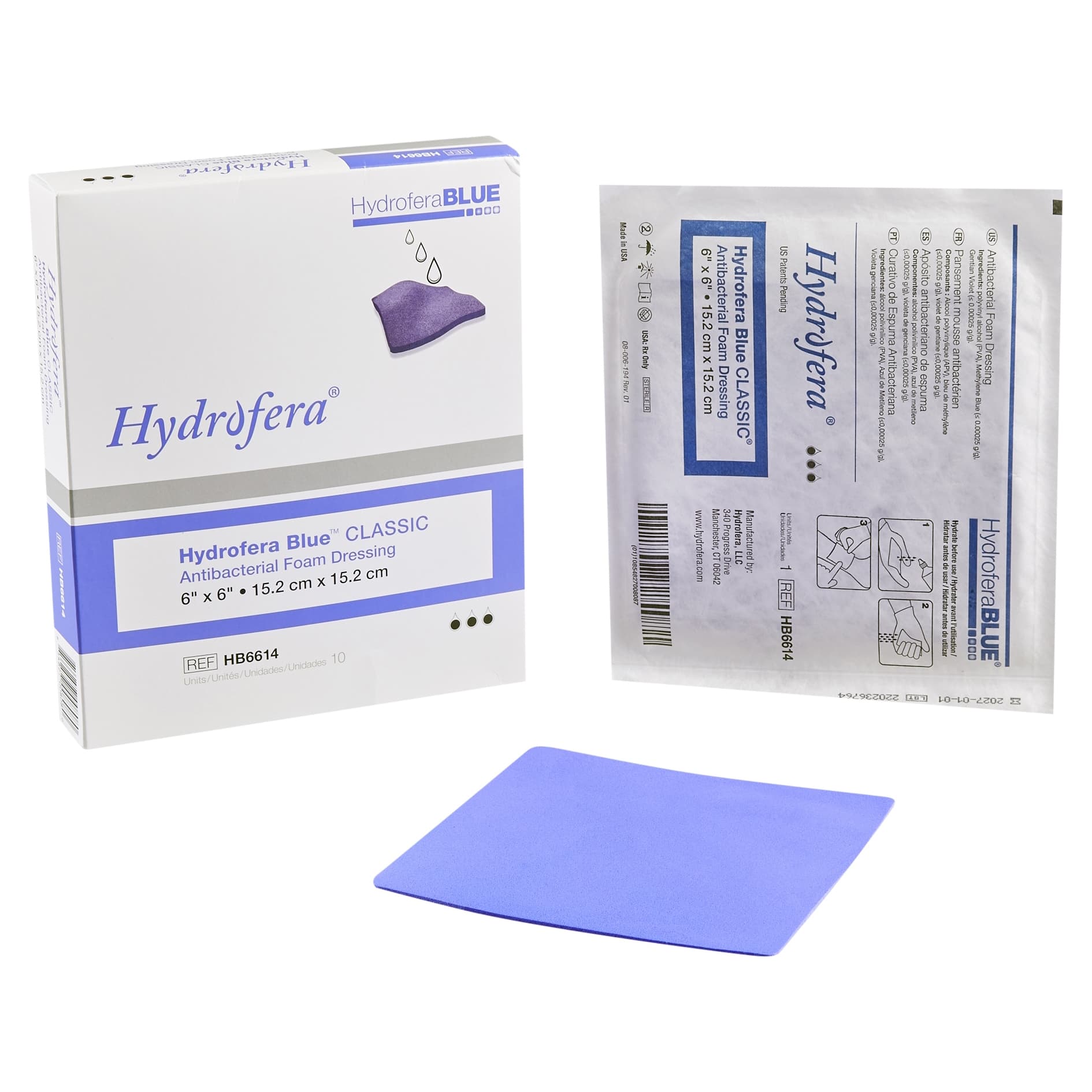
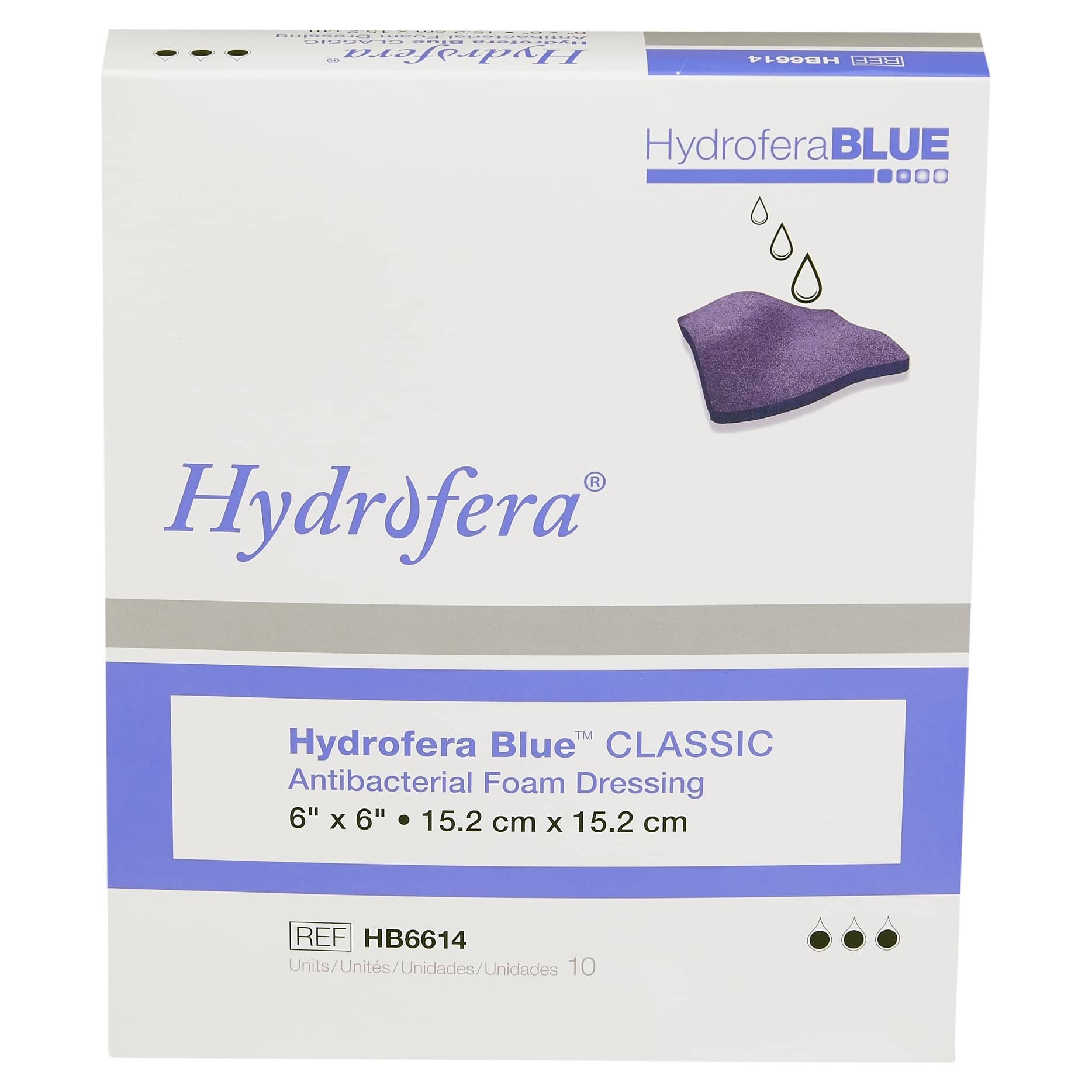

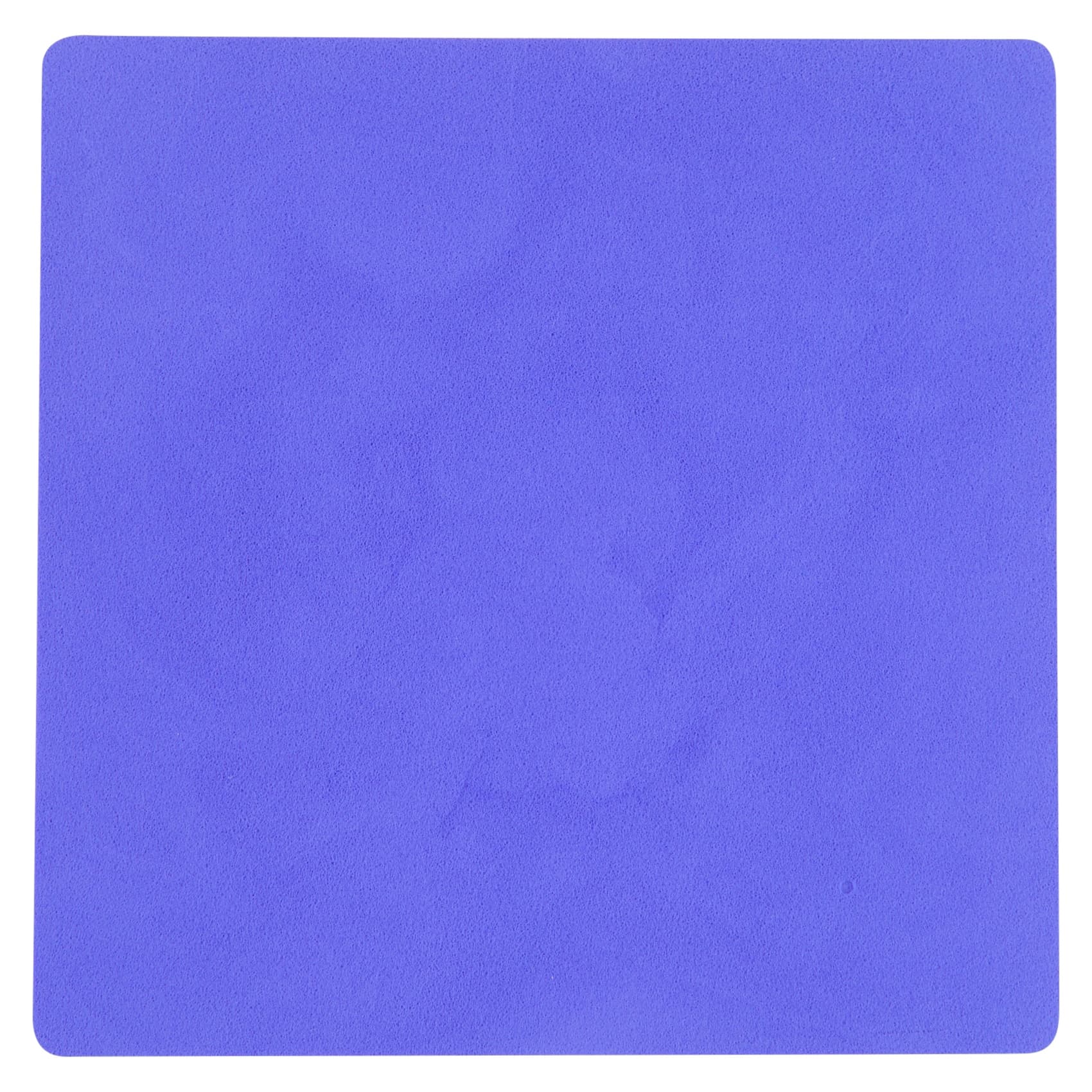
Starts From
Description
Hydrofera Blue Classic Antibacterial Foam Dressings are designed to draw bacteria-laden exudate continuously away from the wound surface and into the foam, helping to maintain a cleaner and healthier healing environment. Made from open-celled polyvinyl alcohol (PVA) foam, this advanced dressing efficiently manages wound drainage while supporting a moist environment essential for optimal healing.
Features:
- Broad-Spectrum Antibacterial Protection: Infused with gentian violet and methylene blue to combat gram-positive, gram-negative, and yeast microorganisms.
- Continuous Wicking Action: Draws bacteria and exudate away from the wound surface for cleaner healing.
- Highly Absorptive Foam: Effectively manages moderate to heavy wound drainage.
- Non-Cytotoxic & Safe: Does not inhibit growth factors or damage healthy tissue.
- Supports Autolytic Debridement: Encourages natural removal of necrotic tissue without harming the wound bed.
- Maintains Moist Healing Environment: Promotes faster, healthier wound recovery.
- High Tensile Strength: Provides durability during wear and removal.
- Bacteriostatic Barrier: Forms a protective cover that inhibits microorganism growth.
- Endotoxin Binding: Physically binds harmful endotoxins to protect the wound surface.
- Flattens Epibole Edges: Aids in wound edge management for effective healing.
Active Ingredients:
- Methylene Blue (≤ 0.00025 g/g)
- Gentian Violet (≤ 0.00025 g/g)
Indications for Use
- Pressure injuries
- Diabetic foot ulcers
- Venous stasis ulcers
- Arterial ulcers
- Infected wounds
- Post-surgical wounds
- Donor sites and trauma wounds
- Abrasions, lacerations, and superficial wounds
- Cavity and deep wounds
- Dehisced, sloughy, or granulating wounds
- Moderate to high-exudating wounds
- Acute, chronic, and palliative wounds
How to Apply
- Cleanse the wound area according to standard wound care protocols.
- Select an appropriately sized Hydrofera Blue Classic dressing to cover the entire wound bed.
- Moisten the dressing with sterile saline or sterile water if required.
- Apply directly to the wound, ensuring full contact with the wound surface.
- Cover and secure with an appropriate secondary dressing to maintain moisture balance.
- Change dressing as directed by a healthcare professional or when clinically indicated.
Removal
- Change the dressing every 3 days. If the dressing has retained its blue color where it has been in contact with the wound.
- The new dressing can be left in place for up to 3 days.
- If the dressing turned white or lightened in color, continue daily dressing changes until the blue color is retained.
- If the dressing is dry, thoroughly remoisten with sterile saline or sterile water. Then gently remove the dressing.
Contraindications
- Not intended for use on patients with known sensitivity to any of the dressing's components.
- Do not use on dry or minimally exudating wounds without clinical supervision.
Warnings and Precautions
- Hydrofera Blue CLASSIC is not intended for use on third-degree burns.
- Keep dry until you are ready to use.
- Keep away from heat.
Warranty
- The product warranty is applicable as per the terms and conditions provided by the product manufacturer.
Please call us for specific details.
Return
- No returns will be accepted after 30 days from the date of shipment.
- All returns are subject to a restocking fee as per manufacturers terms and conditions.
- All returns must have an RGA number (Returned Goods Authorization), unauthorized returns will not be accepted.
- We do not guarantee fulfillment of any desired purpose or product suitability to the user and this will not be considered as a valid reason for return.
- The products must be new, unused condition, not tampered with, in original packaging and returned at the customers expense in the original packaging.
- If your return is not due to any manufacturing defect then the original shipping cost will be deducted from the total refund.
- Hygiene, bath and toilet items cannot be returned once opened or used.
- Standard manufacturer terms and conditions apply for return policy of this product.
Please call us for specific details.
Resources
Description
Hydrofera Blue Classic Antibacterial Foam Dressings are designed to draw bacteria-laden exudate continuously away from the wound surface and into the foam, helping to maintain a cleaner and healthier healing environment. Made from open-celled polyvinyl alcohol (PVA) foam, this advanced dressing efficiently manages wound drainage while supporting a moist environment essential for optimal healing.
Features:
- Broad-Spectrum Antibacterial Protection: Infused with gentian violet and methylene blue to combat gram-positive, gram-negative, and yeast microorganisms.
- Continuous Wicking Action: Draws bacteria and exudate away from the wound surface for cleaner healing.
- Highly Absorptive Foam: Effectively manages moderate to heavy wound drainage.
- Non-Cytotoxic & Safe: Does not inhibit growth factors or damage healthy tissue.
- Supports Autolytic Debridement: Encourages natural removal of necrotic tissue without harming the wound bed.
- Maintains Moist Healing Environment: Promotes faster, healthier wound recovery.
- High Tensile Strength: Provides durability during wear and removal.
- Bacteriostatic Barrier: Forms a protective cover that inhibits microorganism growth.
- Endotoxin Binding: Physically binds harmful endotoxins to protect the wound surface.
- Flattens Epibole Edges: Aids in wound edge management for effective healing.
Active Ingredients:
- Methylene Blue (≤ 0.00025 g/g)
- Gentian Violet (≤ 0.00025 g/g)
Indications for Use
- Pressure injuries
- Diabetic foot ulcers
- Venous stasis ulcers
- Arterial ulcers
- Infected wounds
- Post-surgical wounds
- Donor sites and trauma wounds
- Abrasions, lacerations, and superficial wounds
- Cavity and deep wounds
- Dehisced, sloughy, or granulating wounds
- Moderate to high-exudating wounds
- Acute, chronic, and palliative wounds
How to Apply
- Cleanse the wound area according to standard wound care protocols.
- Select an appropriately sized Hydrofera Blue Classic dressing to cover the entire wound bed.
- Moisten the dressing with sterile saline or sterile water if required.
- Apply directly to the wound, ensuring full contact with the wound surface.
- Cover and secure with an appropriate secondary dressing to maintain moisture balance.
- Change dressing as directed by a healthcare professional or when clinically indicated.
Removal
- Change the dressing every 3 days. If the dressing has retained its blue color where it has been in contact with the wound.
- The new dressing can be left in place for up to 3 days.
- If the dressing turned white or lightened in color, continue daily dressing changes until the blue color is retained.
- If the dressing is dry, thoroughly remoisten with sterile saline or sterile water. Then gently remove the dressing.
Contraindications
- Not intended for use on patients with known sensitivity to any of the dressing's components.
- Do not use on dry or minimally exudating wounds without clinical supervision.
Warnings and Precautions
- Hydrofera Blue CLASSIC is not intended for use on third-degree burns.
- Keep dry until you are ready to use.
- Keep away from heat.
Warranty
- The product warranty is applicable as per the terms and conditions provided by the product manufacturer.
Please call us for specific details.
Return
- No returns will be accepted after 30 days from the date of shipment.
- All returns are subject to a restocking fee as per manufacturers terms and conditions.
- All returns must have an RGA number (Returned Goods Authorization), unauthorized returns will not be accepted.
- We do not guarantee fulfillment of any desired purpose or product suitability to the user and this will not be considered as a valid reason for return.
- The products must be new, unused condition, not tampered with, in original packaging and returned at the customers expense in the original packaging.
- If your return is not due to any manufacturing defect then the original shipping cost will be deducted from the total refund.
- Hygiene, bath and toilet items cannot be returned once opened or used.
- Standard manufacturer terms and conditions apply for return policy of this product.
Please call us for specific details.
Resources
Starts From


